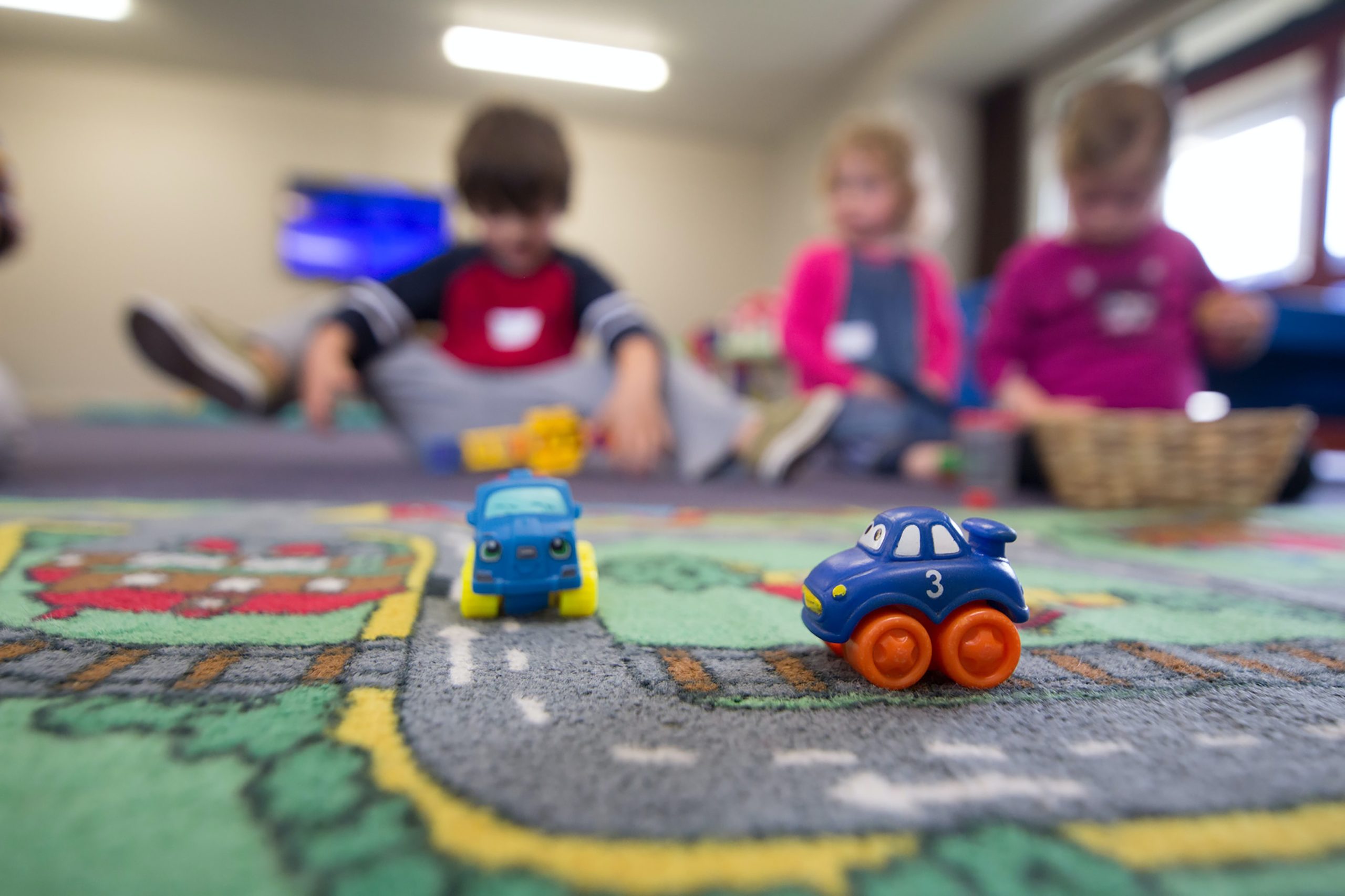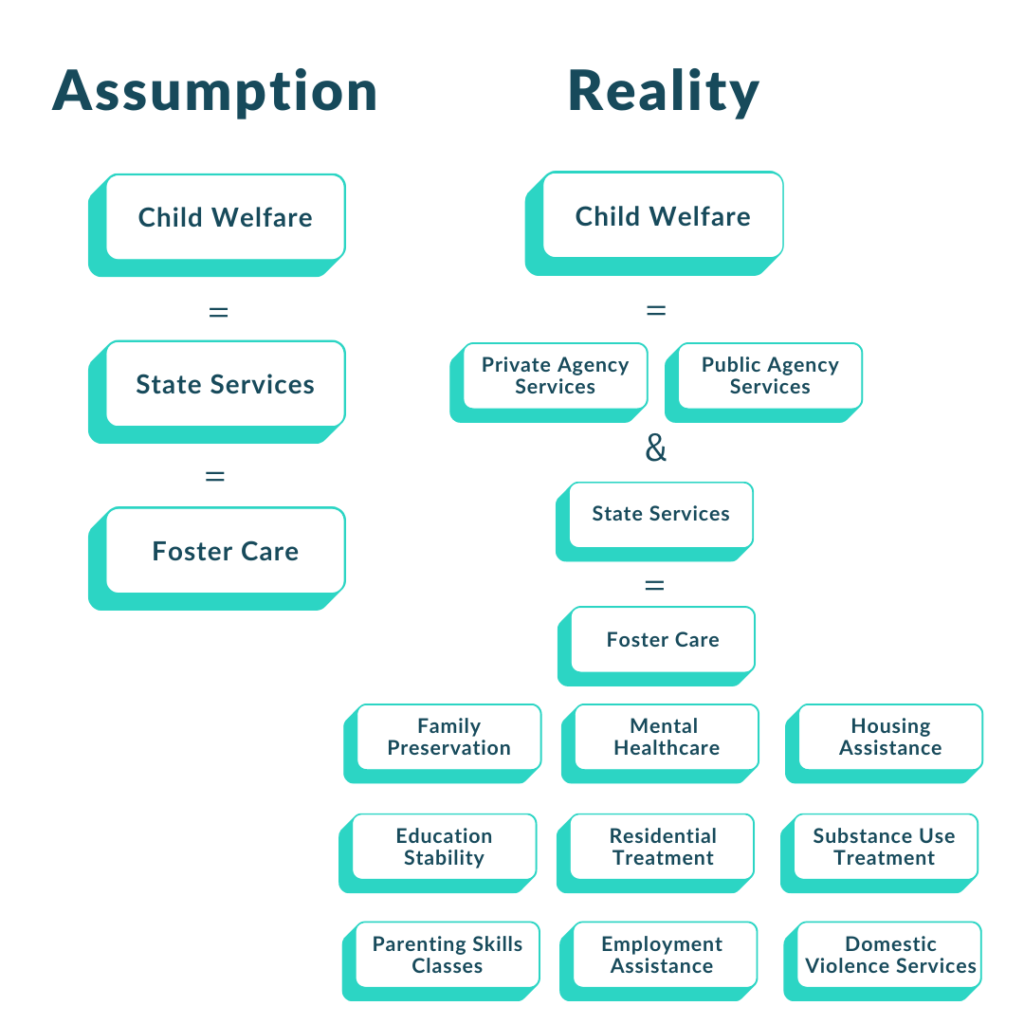

by Elisabeth Wilson, Senior Impact Analyst
My mother worked in social services for 17 years. When I received my first job offer out of school to join the Department of Child Services as a senior research analyst, she was my first call.
I didn’t know if I should take it. I had been googling my new potential employer and the results were less than flattering. Article after article discussed the horrors of children under the department’s care. I oscillated between ecstatic about a job offer, and worried I would be working for an agency that was hurting our community.
I sent every article to my mom and she called back immediately. “There are no heroes in this work, even when a child is removed from the home, there is still pain,” she told me. While I didn’t fully understand what she was saying, I took the job.
It wasn’t until a few months later that I fully comprehended what she was telling me.
I was shadowing in family court at the initial hearing on whether a case was going to be opened with the department. The court room was small. The room had two large tables in front of the judge. On the right was the parent and on the left was the department case worker and lawyer. Behind the tables were folding chairs for audience members. Sitting in a folding chair behind DCS, I watched as the judge ordered that the child be removed from their home that day.
The department would pick the child up from school. As the judge finished the order, the parent let out a wail that I still hear to this day. It was a cry of agony, it rang out across the courtroom. It was the sound of a heart breaking. Even as someone who didn’t know this person, I could hear the love in the wail and the pain caused by the order of removal. My heart broke. The whole hearing took 20 minutes.
However, then I was handed the case file. The case file contained the allegations that led to the removal. They were horrific.
I sat in the little folding chair, reading the case file and watching this parent break down in front of me. It didn’t make sense. The emotions the parent displayed and the actions that brought them into this court did not add up. I could hear the anguish of someone who clearly cared for their child in some way, but whose actions depicted the opposite.
As a researcher, I couldn’t make sense of what I saw. I couldn’t draw a line between the points. I left the courtroom and sat in my car and cried. As I sobbed, I remembered my mom’s words, “there are no heroes in this work.” I finally understood.
I always thought of child welfare as a social worker saving a child from an abusive home. And, in many cases, it is. Yet, I never thought about the parents, or even how scary it would be for a child to be dropped off at school by a parent and picked up by a caseworker.
My assumptions about child welfare were shattered. I thought the field was so black and white. You protect children. Yet, this first day in the courtroom was a glimpse into the gray area that is child welfare and all its human elements: the parents, the family, the social worker. This scene reminded me that people who do this work don’t do it for glory. Contrary to my assumptions, a removal is traumatic and painful, even when it is the right thing to do. So many assumptions were broken that day.
Child welfare is so much more than the articles online, and so much bigger than one caseworker and one agency. With that in mind, I’m going to share some common myths about child welfare and the realities. It is my hope that this will help provide some insight into how this system works and the many families who experience it.
As an outsider, I only saw a single service of the child welfare system: foster care. Foster care is when a child is removed from their home of origin and taken into care by the state. Foster care can be temporary, as many removals are, or permanent in which the child is placed for adoption.

Each state varies in the number of children served by child welfare agencies, and the percentage of children who are receiving foster care services. States provide foster care services to between 9-50% of their child welfare population.
That means in most states, foster care is not provided to the majority of children and families. So that begs the question: what are the other services? If child welfare does not equal foster care, then what is it?
Child welfare offers multiple categories of services to support not only children, but their entire families. Services fall across large categories such as family preservation, foster care, residential treatment, mental health care, substance use treatment, parenting skills, domestic violence services, employment assistance and financial and housing support (Child Welfare Information Gateway, 2020).
Within each of these large service categories are hundreds of programs that work to support children and families. If you ever want to take a deep dive into all the programs check out the California Evidence Based Clearinghouse and The Prevention Services Clearinghouse.
While removals and foster care are the most visible service of the field, and in instances of severe safety issues and abusive households they are a life saving service, removals are not without consequences to the children that experience them. Removing a child from their home and their family is traumatic. It has been associated with severe mental and emotional health problems (Bruskas and Tessin, 2013).
Foster care services must only be given to children who truly need them. Thus, family preservation services were created to support families that need help, but not necessarily foster care services. Family preservation is perhaps the biggest and most recent shift in child welfare, coming to prominence in the 1980s to reduce the number of children entering foster care (Schweitzer et al., 2015). Family preservation uses short term services designed to keep children in their home of origin, while supporting and upskilling parents to keep the family intact.
The majority of children within the child welfare system are receiving in-home family preservation services, many of which are combined with the other large service areas in the figure above.
Now when people ask me what child welfare is, I don’t think of it as a child protection agency, a removal agency or a foster care agency, but rather a family support agency. However, supporting a family and being responsible for hundreds of services is a lot under one roof. Can one state agency really do it all? Absolutely not.
My first job in child welfare was as the Senior Research Analyst for the Indiana Department of Child Services. I lead the first internal research and evaluation team in a child welfare state agency.
When I started, I thought I would be researching the agency that oversees and provides services directly to children. In reality, I was evaluating how a state agency works with multiple private and public agencies to provide services to families.
So, what are all these agencies? Child welfare is made up of a state agency that works with private providers who provide a subset of the services listed above, along with public providers who do the same. Using this network of partnerships, the state is able to offer the hundreds of different services a family may need. These partnerships expand the service array and lead to more families who can get support in times of crisis.
Perhaps even more surprising than learning that child welfare is not just one state agency that serves families, was learning that every single state varies in how their state agency is set up and the network of providers within the state. Child welfare care is not universal. Sometimes, it is not even universal within the same state, with individual county offices overseeing care and service networks.
Today, when I think about child welfare, I think specifically. Are we talking about state agency involvement, provider involvement, county involvement? Who are my key players in this area? What is my child welfare ecosystem?
Once I learned about the variation between states, I wondered about federal oversight. Are individual state departments not wings or extensions of a singular federal agency? Turns out, that’s not how it works.
In fact, the federal agencies and the structures we know today in child welfare are relatively young. While there are multiple divisions and departments across federal government working on children’s issues, the main ones that interact with child welfare are the Administration of Children and Families (ACF) which oversees the Administration of Children Youth and Families (ACYF), and Children’s Bureau which sits within ACYF under ACF. (Even after three years the acronyms never get easier, I have an ever growing cheat sheet saved on my computer.)
Not only are the agency structures relatively young, the data is too. The data we use today to understand child welfare, the National Child Abuse and Neglect Data System (NCANDS), was first published in 1992. This was the first data set that attempted to show how children in child welfare were doing in each state. It is now published every year.
The inception of federal oversight, however, did not equal a standard process across state child welfare. Instead, federal child welfare policy is based on minimum guidelines that each state must meet. It was in 1974 that the Child Abuse Prevention and Treatment Act (CAPTA) set minimum standards for state definitions of child maltreatment. Thus, states were able to show considerable variation in their definitions of child maltreatment, as long as the minimum standards were met.
What did all of this rich history mean for me and my research? It meant starting local, and really spending time to understand the context of the child welfare ecosystem I was in. To really understand child welfare, I had to start asking more questions to those doing the work, because child welfare is not a single service, or single agency, or even a single definition.
Child welfare is an ecosystem of individuals across disciplines working together to improve the lives of children and families in their community. Only through listening do we have any hope of transforming.
The question now for this researcher is, how does the Morgridge Family Foundation fit into this ecosystem? The answer: we start in the gray. We listen to the leaders who navigate the most challenging decisions everyday in the field of child welfare, locally. There is no one size fits all solution to transforming child welfare, but there are solutions to transforming child welfare in our backyard and championing leaders by giving them support and tools to accomplish their vision. We will spend the next three years investing in incredible leaders and programs by providing research support and evaluation training across the sectors of child welfare.
Literature Cited
Bruskas, D., & Tessin, D. H. (2013). Adverse childhood experiences and psychosocial well-being of women who were in foster care as children. The Permanente journal, 17(3), e131–e141. https://doi.org/10.7812/TPP/12-121
Child Welfare Information Gateway. (2020). How the child welfare system works. Washington, DC: U.S. Department of Health and Human Services, Administration for Children and Families, Children’s Bureau.
Schweitzer, D.D., Pecora, P.J., Nelson, K., Walters, B., and Blythe, B.J. (2015). Building the Evidence Base for Intensive Family Preservation Services. Journal of Public Child Welfare. 9: 423-443